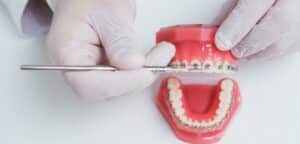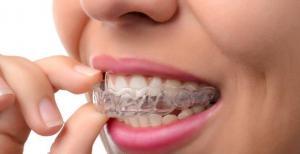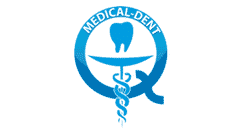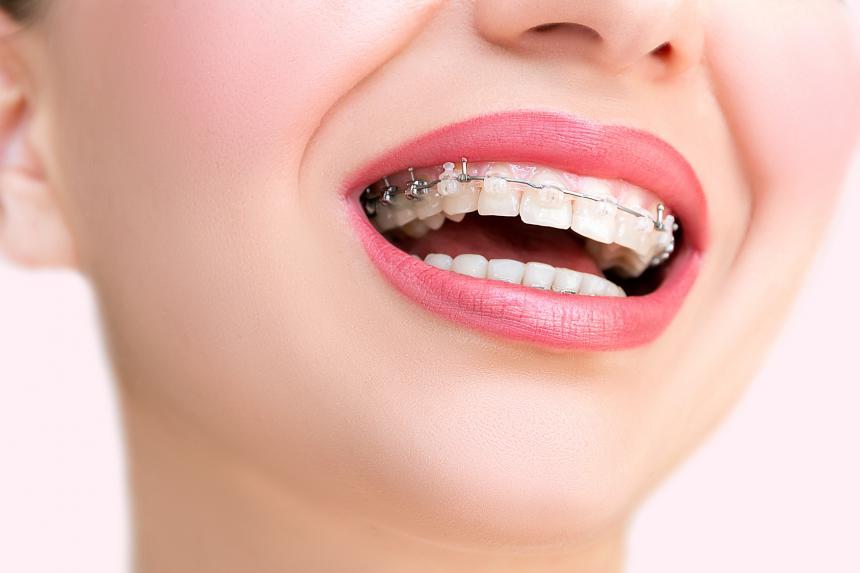What does orthodontic treatment involve? How long does it last? What types of braces are there? These are some of the many questions we receive from our patients. Below you will find the answers to these and many more.
What are the causes of malocclusion?
We wrote more about crooked teeth and malocclusion in our article "Crooked teeth - causes and ways to change it". In short, genes, premature removal of deciduous teeth, or eighths that cause the remaining teeth to squeeze together may be responsible for the smile you are ashamed of, among other things.
Remember that malocclusion and crooked teeth are not just an aesthetic nuisance for their owners. It often also reflects on their well-being and self-esteem and, most importantly, on their health. If your teeth are crowded, it is difficult to clean them properly and thus you are at risk of bacterial growth and, consequently, tooth decay. This is compounded by inflammation and gum disease.
This is not all. Malocclusion often leads to defects in pronunciation and the enamel is much more brittle and susceptible to injury.

When is it a good time to start orthodontic treatment?
There is still a perception among some people that orthodontic treatment is only for teenagers. Nothing could be further from the truth. A beautiful smile can be cared for at any age.
Orthodontic treatment is recommended for:
- pre-school children who show a change in facial profile, changes in occlusion, problems with chewing, biting and speech
- older children and adolescents of developmental age.
- adults who want to improve the appearance of their teeth and facial appearance, prevent the progression of periodontal disease and tooth loss, bring back a retained fang, align teeth before prosthetics.
Of course, prevention is better than cure. Therefore, it is best to visit the dentist's office regularly and monitor changes in the mouth on an ongoing basis.
What does orthodontic treatment involve?
Orthodontic treatment involves changing the position of the teeth, but also altering the development of bone structures and facial muscles that are growing and maturing abnormally. Various types of braces are used for this purpose. More about the solutions you can choose from can be found in our article - Types of braces in the UK - which to choose?
Orthodontic treatment also helps:
- restore normal biting, chewing and swallowing activities
- prevent the development of large deformities, such as facial asymmetries, lower jaw position, etc.
- is often necessary for tooth alignment prior to prosthetic treatment and for tooth alignment in periodontal disease
- has a major impact on the elimination of speech defects

What does a visit to the orthodontist look like?
Orthodontic treatment begins with a consultation. During it, the doctor is able to determine the patient's needs, as well as the initial treatment plan. If you are struggling with malocclusion, you can make an appointment online for your first visit to our practice - together we will find the best solution for you.
The second stage of orthodontic treatment is to perform an extraoral examination, intraoral examination, examination of the temporomandibular joint, including taking an impression. Thanks to it, it is possible to precisely determine the bite defect. In our surgery, we use the following for this purpose intraoral scannerThis avoids an unpleasant procedure. Previously, the patient had to bite into a special mass for several minutes, the taste and quantity of which often caused a vomiting reflex. In addition, the plaster model prepared on the basis of the impression was often inaccurate. With the scanner, the dentist obtains a three-dimensional image on the computer screen in a few minutes, and the scan itself is painless. This allows for very precise diagnosis and treatment.
Following the examination, a full diagnosis and the required extent of treatment is presented and braces are selected.

How long does orthodontic treatment take?
There is no clear answer to this question. The length of orthodontic treatment depends on the type of malocclusion, the patient's age, the patient's biological response, and the patient's cooperation with the doctor.
The average treatment time is 2 years, but this may be shorter or longer depending on the above factors.
There are surgeries that offer teeth straightening in as little as six months, but this method is still controversial. If you would like to learn more about this topic, we recommend our article -. Straight teeth in 6 months - is it possible?
What rules should be followed during orthodontic treatment?
Most importantly, before you even start orthodontic treatment, you must have healthy teeth. This means treating all carious cavities, removing tartar and plaque, and seeing a periodontist if you have active periodontal disease.
Even during orthodontic treatment, remember to brush your teeth after every meal, avoid hard foods such as carrots, apples, but also toffee-type sweets or chewing gum.
And don't forget to visit the dentist, especially if a bracket comes loose or a ring becomes uncemented.

What is retention?
Active orthodontic treatment is followed by a retention therapy phase. It is determined individually for each patient depending on the initial malocclusion.
A retention brace is used for this purpose. It allows the entire effect to be fixed. How long should it be worn? This depends on the needs of the individual patient.
What do I gain by opting for orthodontic treatment?
Firstly, it's the appearance of your teeth and therefore your beautiful smile. Orthodontic treatment will also improve your facial features and temporomandibular joint function.
If you have additional questions write or call to us, we will be happy to answer all of them.
We also invite you to follow us on our channel on Facebook.

